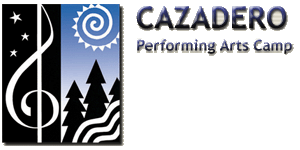Lesson Plan 33
Redwood Trees: How Does Water Get to the Top of the
Tree?
First posted May 6, 2004 Last
updated July 5, 2004
( Grade Level 9-12)

Remember these points from the Lesson Plan
Homepage:
(1) These lesson plans are not rigid requirements,
but a starting point for the Nature Counselor's
plan for teaching a particular day's experience.
(2) The activity should be fun and emphasize
active learning on the student's part: ask a
question, don't just state a fact.
(3) You should employ hands-on as much as possible.
(4) Plan each session to also allow time for
making entries in the Nature
Journal. |
Prior to the
session
(1) Review this section and the section on the Redwood
Forest and on Trees
and Capillary Action.
(2) Round up the capillary tubes, pipettes, a glass
of water, some pennies (one for each student) and some
liquid soap. Please do not lose the supplies, as it
took a lot of work to get them.
(3) Bring the wood cross sections for a discussion of
xylem and phloem.
Session
(1) Start with a discussion of photosynthesis, how
the leaves take water, sunlight, and CO2
and make sugars and oxygen. You do not have to be technical,
just get across the idea that the leaves at the top
of the tree need water. You might lead the students
to discuss this by asking:
* What is photosynthesis? (the process of combining
water, sunlight, and CO2 with the aid of
chlorophyll and producing sugars and oxygen)
* What materials does a tree need to live? (water,
mineral, other nutrients, sunlight)
* Where does it need those materials? (in the leaves,
the chemical factories of the tree)
* What does the tree do with those material? (moves
them from the roots to the leaves via the xylem; the
phloem moves the sugars to the roots and rest of the
tree)
(2) Get them to marvel at the height of the trees,
how much water a tree moves into the leaves each day.
(3) Penny Contest. Give a pipette
and a penny to each student. Have them place the penny
on a level surface and fill the pipette with clean
water (dirty water does not have as good a surface tension.
Do not get any soap in the water). The contest is to
see how many drops of water they can place on the penny
without the water flowing over the side. It should take
about 30 drops. Each student should draw a picture of
the water mounding up over the surface of the penny
and write down how many drops they could place before
it spilled. Discuss the idea of surface tension and
hydrogen bonding.
* Why did the water mound up above the penny?
(4) Repeat the penny contest, but add a little soap
to the water in the glass.
* How many drops before it spilled over? Was this
more or less than the clean water?
* What have you learned about why we wash dishes with
soap?
(5) Capillary tubes. Divide the students into groups.
Give each group several capillary tubes of different
diameter. Hold the capillary tubes with their bottoms
at exactly the same level, dip the bottoms into the
glass of clean water. Note how the water rises in the
tubes. This is capillary action.
* Which tubes have the highest water column, thick
ones or the thin ones?
* What does that tell us about the size of the xylem
tubes? Try it again with the soapy water.
(6) Repeat the discussion about how high the water
goes in the trees, how the water has a lower pressure
high in the tree, limiting leaf size. The leaves at
the top are smaller than the leaves at the bottom, and
they grow slower. Eventually, the tree cannot grow taller,
only wider. Collect some downed leaves from trees and
compare the size of the leaves of the wind-broken branches
with the leaves at the bottom of a tree.

References
San
Francisco Chronicle's article on water
pressure and height in the redwoods.
Back to the Lesson
Plan Homepage
|

